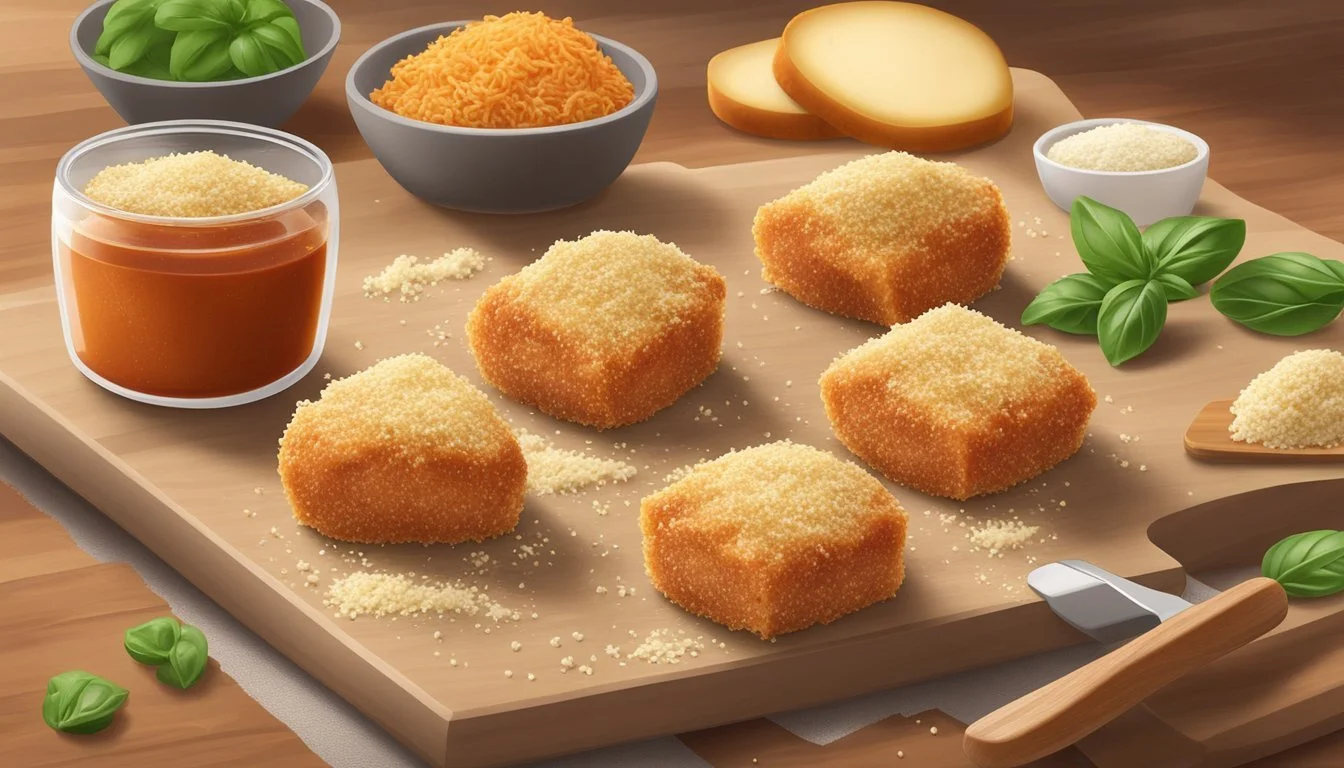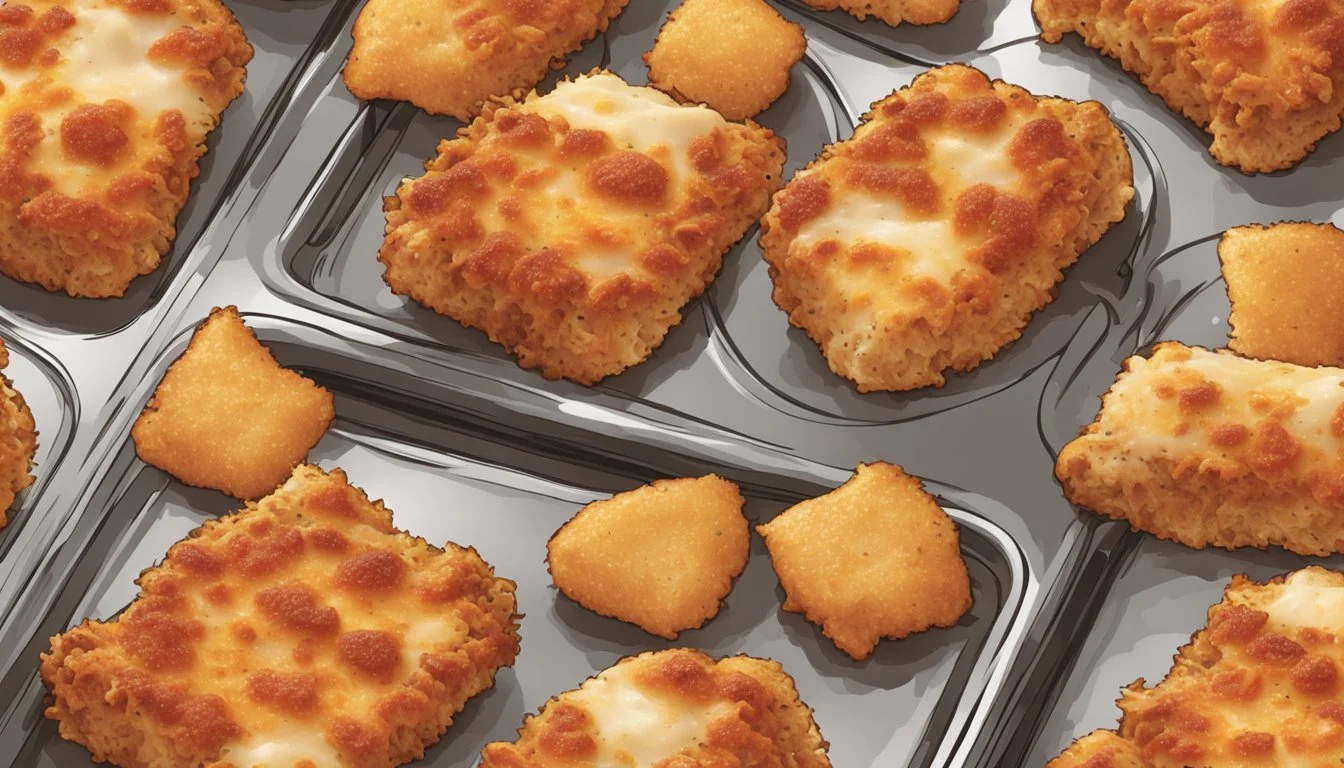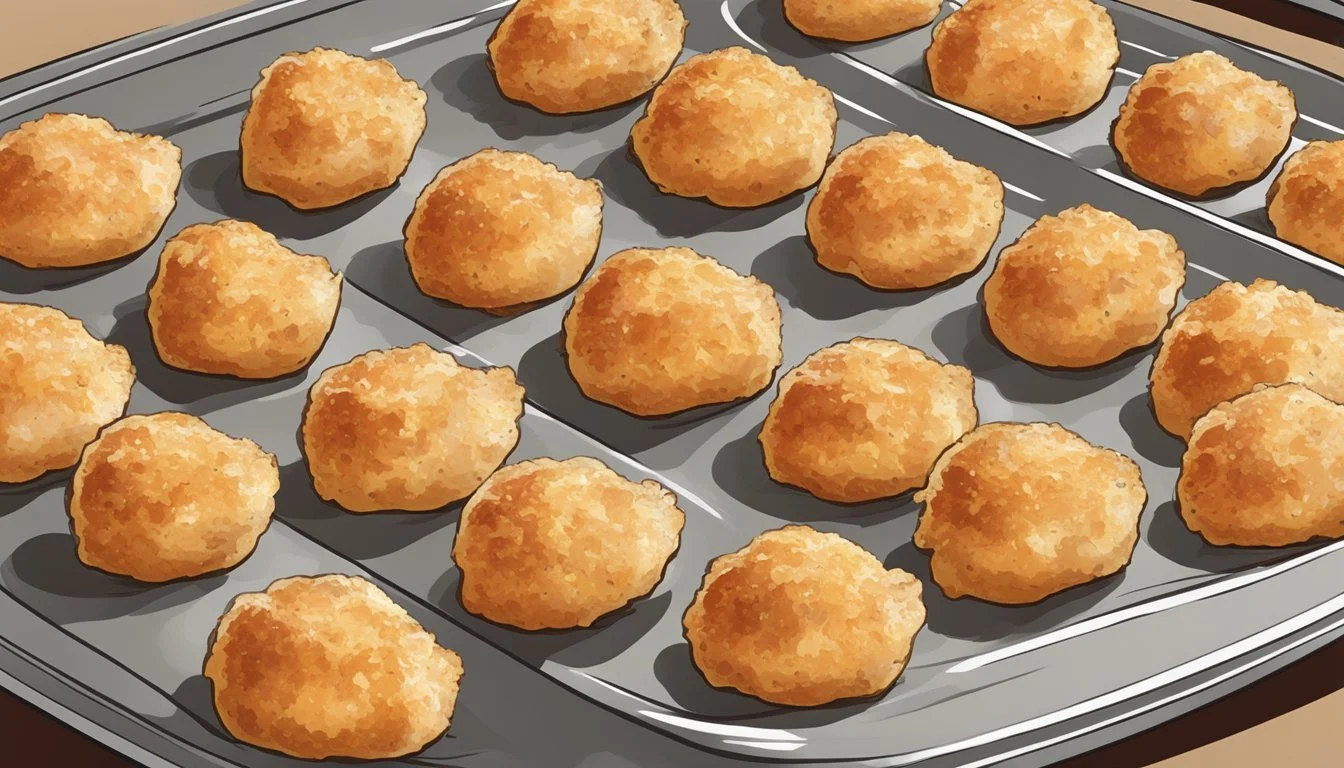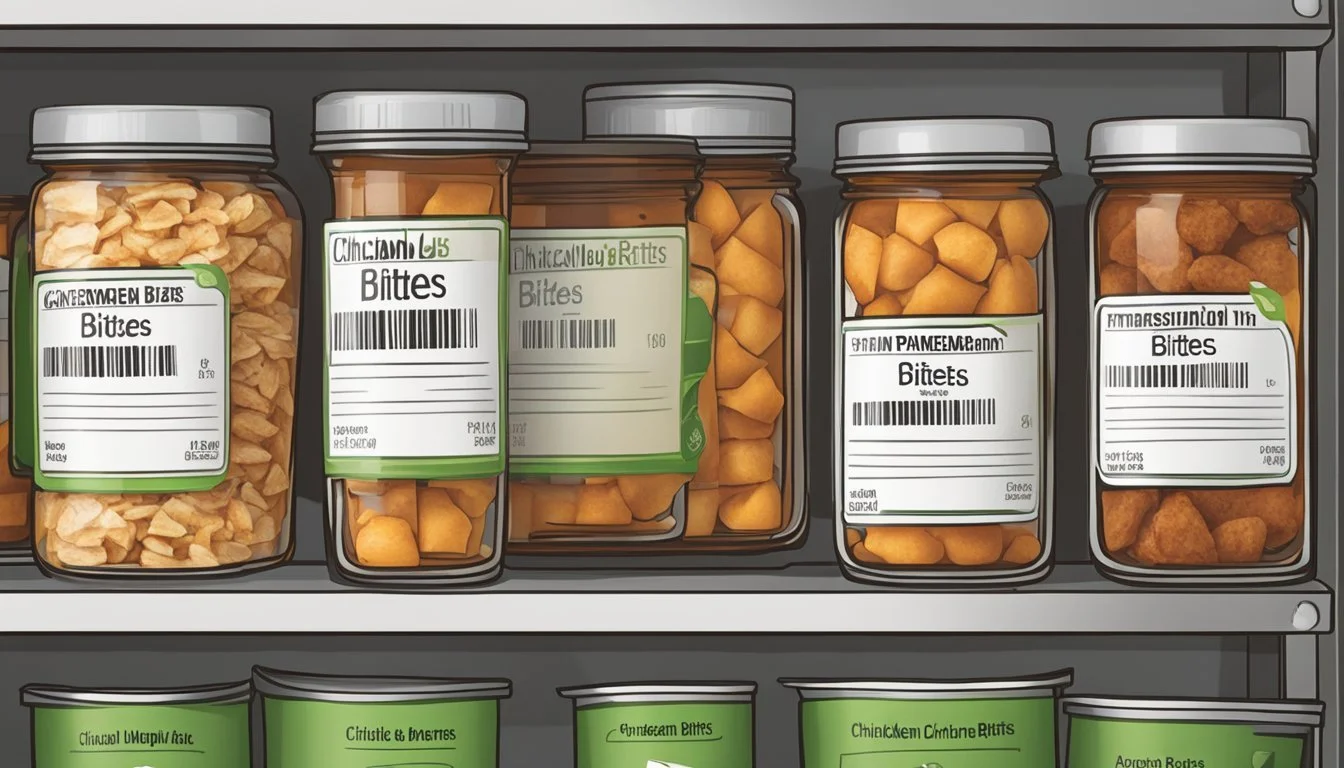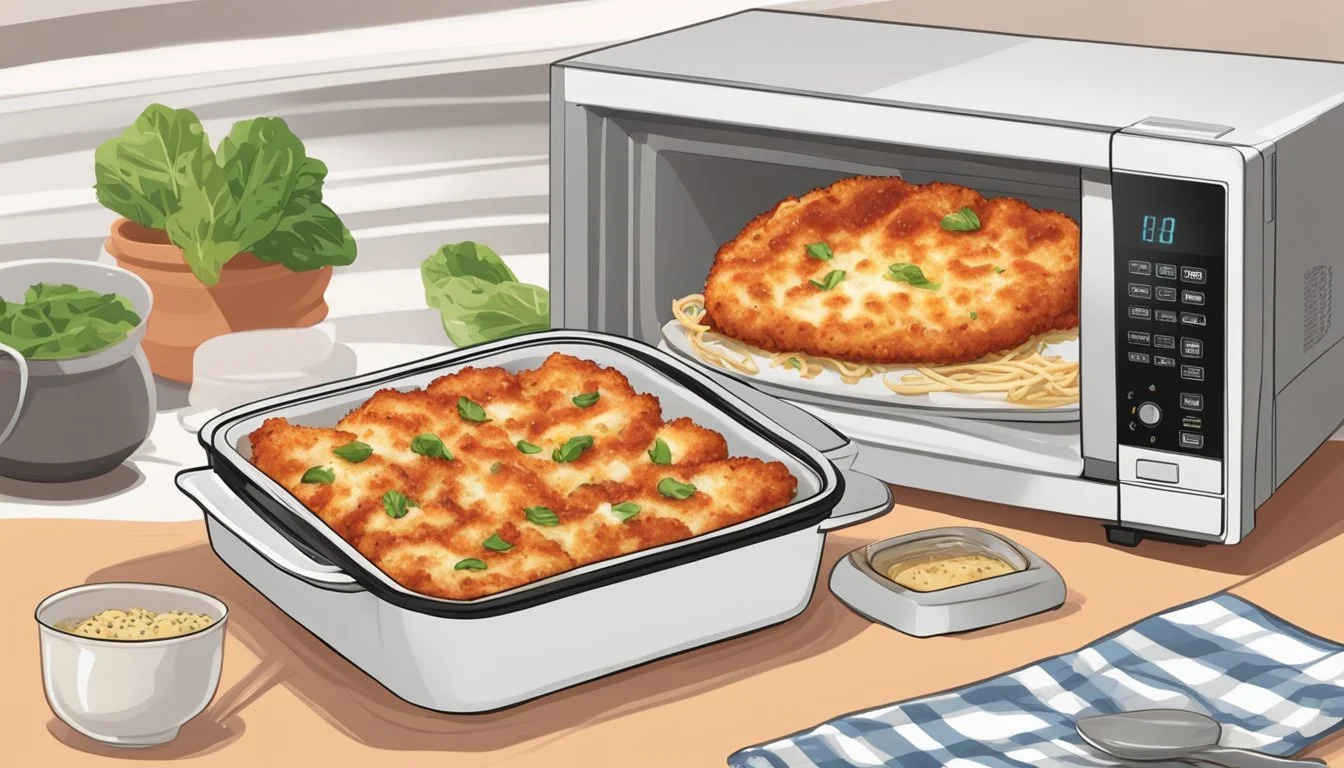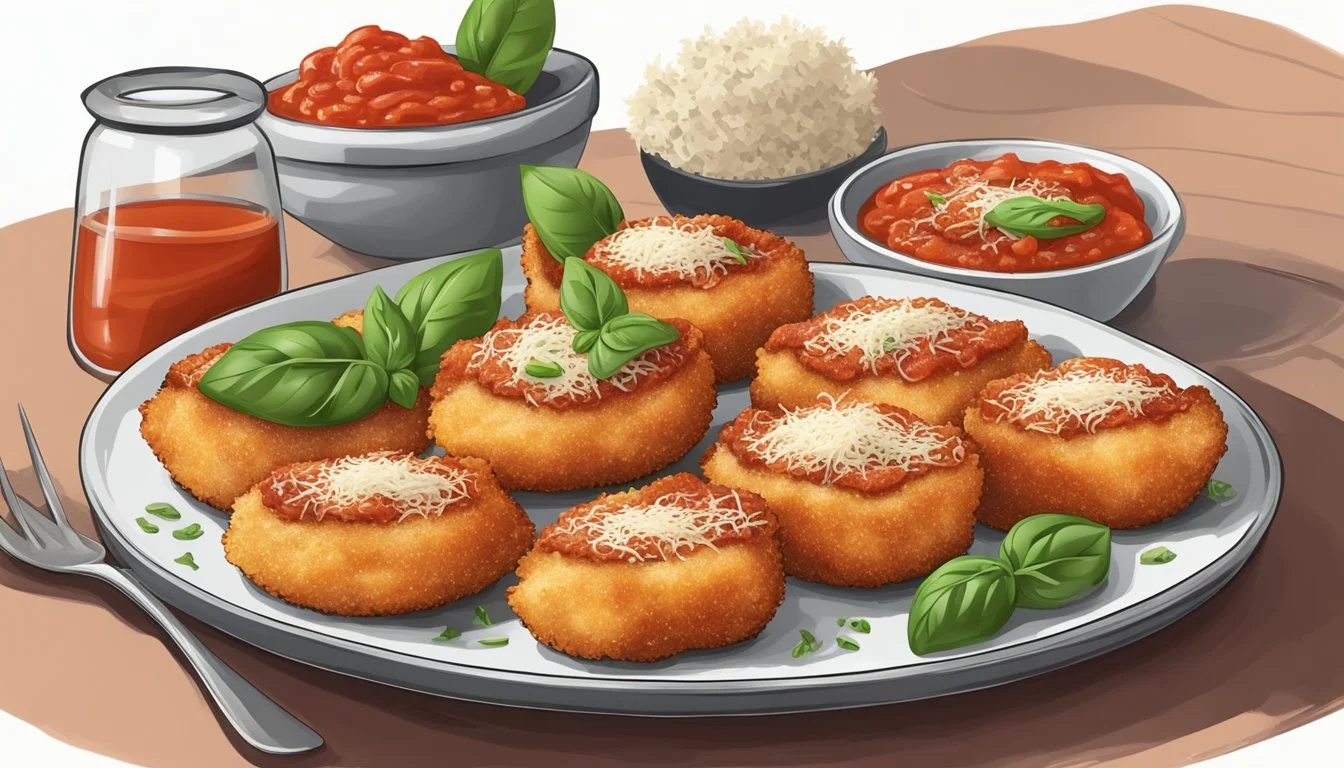How Long Do Chicken Parmesan Bites Last?
Storage Tips and Shelf Life
When it comes to delicious and convenient snacks, chicken parmesan bites are a favorite. Whether you're preparing them for a quick family dinner or making them ahead for meal prep, it's important to know how long these tasty bites will last. Chicken parmesan bites can typically last up to 3-4 days when stored properly in the refrigerator.
For those who like to plan ahead, freezing is a great option. Properly frozen chicken parmesan bites can last up to three months, maintaining their delicious flavor and texture. Always ensure they are stored in airtight containers to prevent freezer burn.
Storing your chicken parmesan bites correctly will ensure you have a ready-to-eat snack or meal whenever you need it. Whether refrigerated or frozen, these bites are a versatile and delightful option for any occasion.
Understanding Chicken Parmesan Bites
Chicken Parmesan Bites are a popular appetizer known for their crispy, golden brown exterior and juicy, flavorful interior. These bites are often made from chicken breast, coated in breadcrumbs and Parmesan cheese, and paired with Italian-inspired ingredients.
Origins and Popularity
Chicken Parmesan Bites draw inspiration from the classic Italian-American dish, Chicken Parmesan. The traditional recipe involves breaded chicken cutlets topped with marinara sauce and melted cheese. This dish has been reimagined into bite-sized portions that are easy to serve at parties or as a quick snack.
The rise in popularity of finger foods and appetizers has made Chicken Parmesan Bites a staple at gatherings. Their appeal lies in the combination of crispy texture and rich flavors, making them a hit among various age groups.
Characteristics of Chicken Parmesan Bites
Chicken Parmesan Bites typically feature juicy chicken breast pieces, breaded and fried or baked to achieve a golden brown crust. The breadcrumb coating often includes Parmesan cheese, which adds a savory taste and a slightly nutty flavor.
Italian-inspired ingredients like marinara sauce and mozzarella or Parmesan cheese enhance the flavor profile. These bites are usually served with a dipping sauce, adding to their appeal. They can be made using just a few simple ingredients, making them both convenient and tasty.
Key characteristics include:
Chicken Breast: Ensures tenderness and juiciness.
Breadcrumbs and Parmesan Cheese: Provide a crispy, flavorful coating.
Golden Brown Crust: Indicates perfect cooking and enhances visual appeal.
Italian Flavors: Incorporate marinara and additional cheese for a classic taste.
Essential Ingredients
When preparing Chicken Parmesan Bites, it's important to select quality ingredients to achieve the best flavor and texture. This includes choosing the right chicken, using the appropriate type of Parmesan, and incorporating other key ingredients that enhance the dish.
Choosing the Right Chicken
For Chicken Parmesan Bites, using boneless, skinless chicken breasts is essential. They provide a consistent texture and are easier to handle when cutting into bite-sized pieces. Chicken thighs can be an alternative for those who prefer a juicier option, though they may require additional trimming. Freshness is key, so opt for high-quality, fresh chicken to avoid any off flavors.
Types of Parmesan
Grated Parmesan cheese is a critical ingredient for authentic Chicken Parmesan Bites. It's advisable to use freshly grated Parmesan rather than pre-packaged versions, as the former offers superior flavor and texture. Look for Parmigiano-Reggiano if available, as it's considered the gold standard for Parmesan cheese. The flavor of good Parmesan will enhance the crispiness and depth of the chicken bites.
Additional Ingredients
Several additional ingredients are necessary to complete the dish. Breadcrumbs, particularly Panko, are recommended for a crispier bite. Eggs are used to help the breadcrumb mixture adhere to the chicken. Olive oil is essential for frying or baking, adding a rich flavor and promoting a golden crust. All-purpose flour is used in the dredging process, while salt and pepper are fundamental seasonings. Garlic adds a fragrant note, and marinara sauce is perfect for serving. Garnish with fresh parsley for a burst of color and freshness.
By carefully selecting and preparing these essential ingredients, your Chicken Parmesan Bites will be flavorful, crispy, and enticingly delicious.
Preparation Techniques
For perfect chicken parmesan bites, focus on the coating and breading process and choose the appropriate cooking method to achieve a golden brown exterior and ensure the chicken is cooked through.
Coating and Breading
Start by preparing the chicken pieces, typically cutting them into bite-sized portions. Mix flour with a pinch of salt and pepper in a shallow bowl.
In another bowl, whisk eggs.
In a third bowl, combine panko bread crumbs with grated Parmesan cheese. This setup simplifies dipping: flour, egg, then breadcrumb mixture. The flour helps the egg stick to the chicken, while the egg allows the breadcrumbs to adhere effectively. For extra crispiness, repeat the breading process by dipping the chicken back into the egg and breadcrumbs.
Ensure each piece is evenly coated to avoid uneven cooking.
Cooking Methods
Oven baking, skillet frying, and air frying are popular ways to cook chicken parmesan bites. For oven baking, preheat the oven to 400°F (200°C) and bake the breaded chicken on a wire rack placed over a baking sheet for 20-25 minutes to achieve even crispiness.
For skillet frying, heat oil in a skillet over medium heat and cook the chicken bites for 3-4 minutes per side until golden brown and cooked through.
Air frying offers a healthy alternative, requiring preheating to 375°F (190°C) and cooking for 12-15 minutes, shaking occasionally for even browning.
Each method ensures the chicken reaches an internal temperature of 165°F (74°C).
Cooking Time and Temperature
Cooking chicken parmesan bites requires precision to achieve the perfect balance of golden brown exterior and a fully cooked interior. Each cooking method—oven baking, air frying, and pan frying—has specific temperature settings and cook times.
Oven Baking
When baking chicken parmesan bites in the oven, preheat the oven to 400°F (200°C). Arrange the bites on a baking sheet lined with parchment paper. Bake for approximately 20-30 minutes. Ensure even cooking by flipping the bites halfway through the cooking time. Use a meat thermometer to check that the internal temperature reaches 165°F (74°C).
Key Points:
Temperature: 400°F (200°C)
Cook Time: 20-30 minutes
Tip: Flip bites halfway for even cooking
Internal Temp: 165°F (74°C)
Air Frying
For air frying, preheat the air fryer to 375°F (190°C). Place the chicken parmesan bites in a single layer in the air fryer basket. Cook for 10-12 minutes, shaking the basket halfway through to ensure even cooking. The bites should turn golden brown and crispy. Verify they are cooked through by checking the internal temperature.
Key Points:
Temperature: 375°F (190°C)
Cook Time: 10-12 minutes
Tip: Shake basket halfway through
Internal Temp: 165°F (74°C)
Pan Frying
To pan fry, heat a skillet over medium heat and add a generous amount of oil. Once the oil is hot, add the chicken parmesan bites, ensuring not to overcrowd the skillet. Cook each side for about 3-4 minutes until golden brown and crispy. Drain on a paper towel-lined plate. Again, check that the internal temperature reaches 165°F (74°C) to ensure they are fully cooked.
Key Points:
Temperature: Medium heat
Cook Time: 3-4 minutes per side
Tip: Avoid overcrowding the skillet
Internal Temp: 165°F (74°C)
Using the correct cooking times and temperatures will ensure chicken parmesan bites are delicious and safe to eat.
Serving and Presentation
When serving chicken Parmesan bites, the details in plating and the choice of sides can enhance the overall dining experience. Proper presentation can make a significant difference in how appealing and appetizing the dish appears.
Proper Plating
Arrange the chicken Parmesan bites on a large plate or platter, ensuring they are evenly spaced. This helps to showcase each piece and makes the dish look more inviting. Garnish the bites with finely chopped fresh parsley or basil for a touch of color and freshness.
Offering a small bowl of warm marinara sauce on the side, or drizzling it lightly over the bites, adds flavor and visual appeal. For a professional touch, consider using a squeeze bottle to artistically drizzle the sauce.
Sides and Accompaniments
Pairing chicken Parmesan bites with the right sides can create a well-rounded meal. Caesar salad is a classic choice that complements the rich flavors of the bites. The crisp, fresh greens and tangy dressing provide a good contrast.
For a heartier option, serve the bites alongside a portion of pasta tossed in a light marinara or olive oil-based sauce. This combination ensures that the meal remains balanced and satisfying.
Lastly, consider offering a variety of dipping options, like ranch dressing or honey mustard, to cater to different taste preferences. Including a small side salad or steamed vegetables can also add nutritional value and color to the plate.
Nutritional Information
Chicken Parmesan bites are a popular choice for their delicious taste and nutritional benefits. Key points include the breakdown of macronutrients and the caloric content.
Macronutrient Breakdown
Chicken Parmesan bites consist of three main macronutrients: protein, fat, and carbohydrates. A typical serving size (e.g., 5 oz) generally provides the following macronutrient profile:
Protein: Approximately 14% to 32% of the Daily Value (DV), equivalent to 20-32 grams.
Fat: Typically 69% of calories come from fat, with details including 32-40 grams per serving.
Carbohydrates: Often making up 17% of the overall profile, this can be around 10-20 grams per serving.
Sugar and Sodium: Attention should be paid to sodium content, as it can be moderate to high depending on preparation methods, usually around 500-900 mg per serving.
These macronutrients contribute to the dish's energy provision, satiety, and overall nutritional balance.
Caloric Content
An average 5 oz serving of Chicken Parmesan bites generally contains around 510 calories. This calorie amount reflects the combined energy from protein, fat, and carbohydrates.
This caloric density makes it a substantial snack or part of a meal, offering both flavor and nutritional value. As part of a balanced diet, these bites can be a good source of energy and essential nutrients.
Storage Guidelines
Proper storage of chicken parmesan bites ensures they retain their flavor and texture, while also preventing any health risks associated with spoiled food.
Refrigeration
Chicken parmesan bites should be stored in the refrigerator within two hours of cooking to maintain freshness and safety. Use an airtight container to prevent contamination and moisture loss. When stored correctly, they can last up to four days at a temperature below 40°F (4°C).
For best quality, consume the bites within these four days. Always check for any signs of spoilage such as off odors, discoloration, or mold before eating. Reheating should be done thoroughly to an internal temperature of 165°F (74°C).
Freezing and Thawing
To extend the shelf life of chicken parmesan bites, consider freezing them. Arrange the bites on a baking sheet in a single layer until frozen, then transfer to a freezer-safe container or bag.
Label the container with the date to keep track of storage time. Frozen bites can last up to three months. For reheating, thaw them in the refrigerator overnight.
Cook from frozen by placing them in the oven at 350°F (175°C) for 20-25 minutes or until heated through. Avoid refreezing thawed bites as it can negatively affect texture and taste.
Reheating Instructions
Properly reheating chicken parmesan bites can ensure they remain tasty and safe to eat. Two effective methods are using the oven and the microwave.
Oven Reheating
The oven method helps maintain the crispy texture of the chicken parmesan bites.
Preheat the oven to 350°F (175°C).
Arrange the leftover chicken parmesan bites in a single layer on a baking sheet or in an oven-safe dish. Lining the sheet with parchment paper can prevent sticking.
Cover the dish with aluminum foil to preserve moisture.
Place the bites in the preheated oven and bake for 15-20 minutes until they are heated through. The internal temperature should reach 165°F.
Microwave Tips
For a quicker method, the microwave can be used, though it may result in a less crispy finish.
Place the chicken parmesan bites on a microwave-safe plate. Avoid stacking them to ensure even heating.
Cover the bites with a microwave-safe lid or a damp paper towel to retain moisture.
Microwave on high for 1-2 minutes. Check if they are heated through. If not, microwave in additional 30-second intervals until hot.
To improve the crispy texture, consider briefly broiling the bites in the oven or toaster oven after microwaving.
Recipe Variations and Ideas
Chicken Parmesan Bites offer a versatile base for creative recipes and dietary adjustments. Various ingredients and methods allow for unique twists while keeping the dish easy and quick to prepare.
Creative Twists
Pesto Chicken Parmesan Bites
Using pesto sauce instead of traditional marinara provides a fresh flavor change. After cooking the chicken bites until golden, toss them in a mix of pesto and Parmesan cheese.
Bacon-Wrapped Chicken Parmesan Bites
For a richer taste, wrap each chicken bite in a strip of bacon before baking. This adds a savory, smoky flavor to the dish.
Garlic Parmesan Chicken Bites
Garlic-infused butter and grated Parmesan create a tasty twist. Sauté the cooked bites in garlic butter then toss in Parmesan. Perfect for garlic lovers.
Buffalo Chicken Parmesan Bites
Add a spicy kick by coating the baked bites in buffalo sauce. Serve with blue cheese or ranch dressing for dipping.
Herb-Crusted Chicken Parmesan Bites
Mix dried herbs like thyme or rosemary into the breadcrumb coating. This enhances the flavor profile with aromatic herbs.
Dietary Adjustments
Gluten-Free
Substitute traditional breadcrumbs with gluten-free alternatives. Ensure all other ingredients, like Parmesan cheese and spices, are certified gluten-free.
Low Carb/Keto
Replace breadcrumbs with crushed pork rinds or almond flour. These substitutions keep the carb count low while providing a similar texture.
Dairy-Free
Use dairy-free Parmesan alternatives and omit any cheese-containing sauces. Nutritional yeast can add a cheesy flavor without dairy.
Vegetarian
Swap chicken for tofu or tempeh. Coat and cook in the same way for a vegetarian-friendly version.
Egg-Free
For those avoiding eggs, use a dairy-free milk or water mixed with a starch like cornstarch as a binding agent to help the coating stick to the chicken.
These adjustments allow everyone to enjoy Chicken Parmesan Bites, regardless of dietary restrictions.
Conclusion
Chicken Parmesan bites are a popular dish enjoyed by many.
Storage:
These bites are best when served fresh from the oven.
Leftovers should be stored in an airtight container.
Refrigerate the bites and consume within 3-4 days.
Quality Considerations:
While in the fridge, the texture may become soggy.
To maintain crispness, reheat in an oven rather than a microwave.
Freezing:
For longer storage, freeze the bites in a single layer before transferring them to a freezer bag.
They can be kept frozen for up to 3 months.
Reheat in an oven without thawing to keep them crispy.
Proper storage ensures the bites remain tasty and safe to eat. By following these guidelines, one can enjoy Chicken Parmesan bites at their best.




